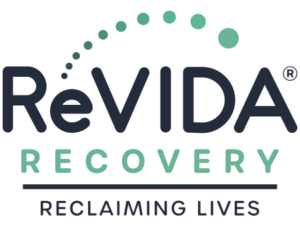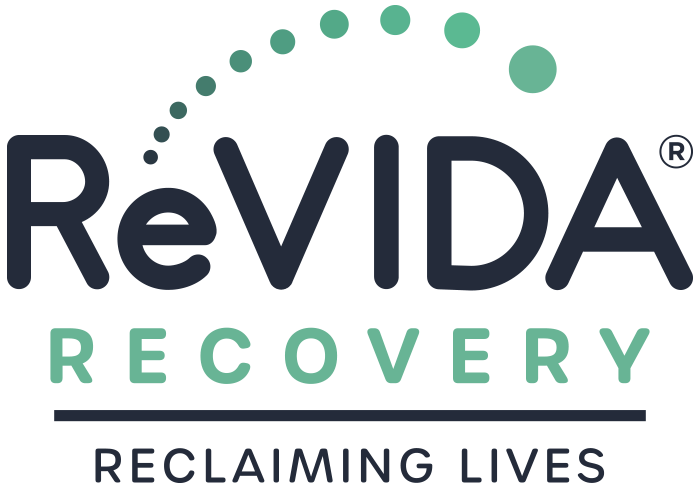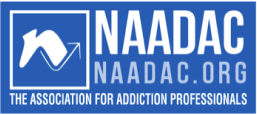
If you or someone you care about is managing a heroin use disorder, life might be a little unpredictable (or scary) right now. It isn’t just the addiction that’s heavy – it’s all the heroin side effects that come alongside it. Heroin isn’t a regulated drug; those who sell it don’t exactly have the safety of others in mind. It’s sold as an opioid but could be mixed with any number of drugs or additives like fentanyl.
The signs of heroin use are both felt and seen, and today we’re here to talk about the scars that are often visible. At ReVIDA® Recovery, we believe the more our community knows, the more prepared they’ll be when it’s time to seek treatment for themselves or someone they love. Let’s talk about heroin track marks, what they look like, and how to find recovery from opioids.
Table of Contents
What Are Heroin Track Marks, and What Do They Look Like?
Because hypodermic needles are used to inject heroin into the veins, distinctive marks are often left behind.
Heroin track marks, also known as injection or needle marks, are one of the telltale signs of repeated heroin use. They serve as visual reminders of an often painful journey with heroin addiction. For some, they look like tiny puncture marks or scars on the skin, barely visible to the naked eye. For others, they look dark purple, bright red, or even bloody. These puncture marks can also lead to abscesses if they become infected and go untreated, making them look like open sores.
Track marks don’t heal quickly, which is why they’re so visible. The same injection site is often used over and over. In fact, some people will hide these marks with long-sleeved, baggy clothes. They may also use band-aids to cover the wounds. The cleanliness of the needles, the quality of the heroin being used, and the technique used for injection all play a role in what these track marks look like.
Where Are Track Marks Commonly Found On the Body?
The presence of track marks isn’t limited to one location on the body. When we think of heroin injection, most of us think about the forearms. This spot is easily accessible and it’s often simple to find a vein here, which is why it’s so common. But the individual’s preference plays a large role in track mark location.
For example, someone who works in an occupation where their arms are easily seen might choose to inject heroin in more subtle locations, like their upper arms, groin, or between their toes. People will also switch injection sites if they’ve used one location for too long. This means that track marks can be found in multiple locations.
How Long Do Heroin Track Marks Last
The visibility of heroin track marks is impacted by things like the location of the marks on the body, skin tone, and unique physiology (how quickly or easily the individual heals). Because it varies drastically from person to person, there is no set time period in which track marks stick around.
Track marks will usually fade in time after someone has stopped injecting heroin. There are a few things that can speed up this process. Access to adequate medical care is one of those things. If someone is in recovering from heroin addiction and in a treatment facility, or if they’re seeing their physician regularly, the track marks are more likely to fade. Doctors can offer prescriptions to treat infections or abscesses. They can also teach patients how to take care of their skin in a way that accelerates healing.
Someone’s diet and exercise routines can also play a role in the healing process. If the rest of the body is healthy, the skin will heal faster. Personal hygiene is also a factor in how quickly the scars will fade.
Heroin Withdrawal Symptoms
If it was easy to stop using heroin, it wouldn’t be known as an addiction. The truth is that regular heroin use often leads to both physical and mental dependency. If you or someone you love has been using heroin for a while, discontinuing use can lead to uncomfortable withdrawal symptoms that make it difficult to function.
Some of the most common heroin withdrawal symptoms include:
- Muscle aches
- Sweating and chills
- Vomiting or diarrhea
- Abdominal cramps
- Runny nose/watery eyes
- Insomnia
- New or worsening depression
- Anxiety and panic attacks
- Intense cravings
- Mood swings
- Fatigue
- Irritability or agitation
It’s because of these withdrawal symptoms that up to 91% of people relapse, or return to heroin use. Relapse can lead to a heroin overdose, which is both tragic and preventable. It’s difficult to overcome these symptoms – especially alone. This is why high-quality, dependable treatment is one of the smartest choices you can make for yourself or a loved one.
Getting Treatment For Heroin Use Disorder
At ReVIDA® Recovery, we have seen firsthand how effective evidence-based heroin addiction treatment can be. It doesn’t matter how long you’ve been taking heroin or how impossible it feels to stop right now – recovery is always possible. Let’s talk about some of the treatment options we offer that could help you reclaim your life from opioids.
Medication-Assisted Treatment (MAT)
While you’re here for MAT, you’ll be closely monitored by a compassionate and knowledgeable staff. Medications are available that can help in alleviating heroin withdrawal symptoms and guiding you safely into recovery. You’ll also have access to resources that can help you on your journey moving forward, including individual counseling, group counseling, and support groups. In an MAT program, we use medications alongside traditional therapy to guide you away from opioids and into a healthy life of recovery.
You’ll also have the option to move forward with our outpatient treatment program. If a higher level of care is warranted, we will provide referrals for a local inpatient or residential treatment program. Your clinician will go over all of your options to set you up for success.
Suboxone® (Buprenorphine) Treatment
Medication-assisted treatment, or MAT, is a safe and evidence-based way to treat OUD. At ReVIDA® Recovery, we support the use of Suboxone® (buprenorphine) because it has been proven to reduce cravings while working to prevent relapse. To receive Suboxone® (buprenorphine) treatment, you will have to be opioid-free for 24 hours.
Outpatient Rehab Services
We believe that both individual and group therapy are critical components in the treatment of OUD – especially if you’re looking for long-term recovery. This is a safe and supportive space where you will learn how to manage your triggers and create healthy coping mechanisms. Our behavioral healthcare team is composed of licensed therapists, certified counselors, care coordinators, and peer recovery specialists who are standing by and ready to help. If we can treat your addiction where it started, at its roots, your chance of recovery is greater than if we were to simply treat your withdrawal symptoms.
At ReVIDA® Recovery, we’re standing by to help you reclaim your life from heroin. Recovery is possible, and you can start your journey to wellness whenever you’re ready. To learn more or to schedule an appointment, please call us today at 423-631-0432.
FAQs About Heroin Track Marks
What are heroin track marks?
Heroin track marks, also known as injection or needle marks, are one of the telltale signs of repeated heroin use. They serve as visual reminders of an often painful journey with heroin addiction. For some, they look like tiny puncture marks or scars on the skin, barely visible to the naked eye. For others, they look dark purple, bright red, or even bloody. These puncture marks can also lead to abscesses if they become infected and go untreated, making them look like open sores.
How do you recognize a heroin user?
The signs of heroin use show up differently for everyone. For some, you can recognize track marks or needle injections on their bodies. For others, their eyes may be glazed over or they might have pinpoint pupils. Others may simply seem fatigued or “out of it” most of the time. If you suspect that someone you care about might be using heroin, it could be time to seek treatment.
Where can the heroin track marks be found on the body?
When we think of heroin injection, most of us think about the forearms. Some may choose to inject heroin in more subtle locations, like their upper arms, groin, or between their toes. People will also switch injection sites if they’ve used one location for too long. This means that track marks can be found in multiple locations.









